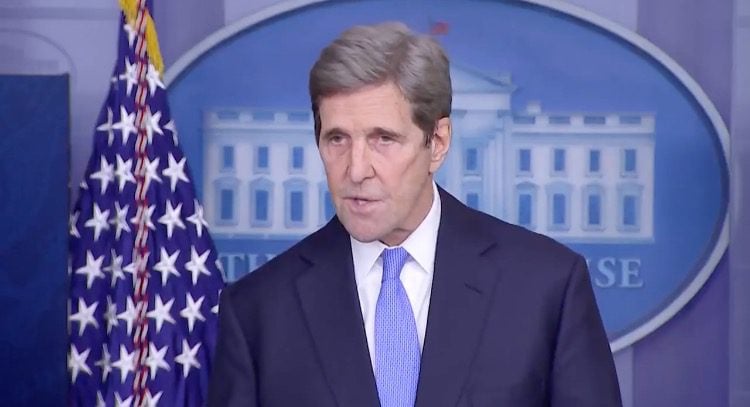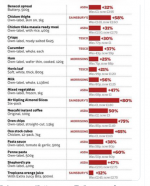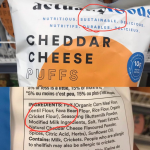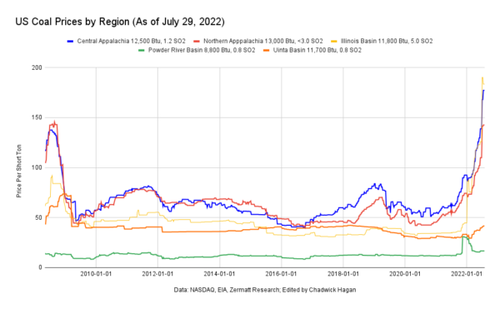All Global Research articles can be read in 51 languages by activating the “Translate Website” drop down menu on the top banner of our home page (Desktop version). To receive Global Research’s Daily Newsletter (selected articles), click here. Follow us on Instagram and Twitter and subscribe to...

www.globalresearch.ca
Bill Gates’ Sinister Plan to Force You to Eat “Fake Meat”
By
The Expose
Global Research, August 18, 2022
The Expose 17 August 2022
Bill Gates owns more farmland in the U.S. than any other private farmer, having purchased a total of 242,000 acres. Is the purchase of this land all part of his plan to force you to eat lab-grown synthetic meat?
The Bill & Melinda Gates Foundation, the largest charitable foundation in the world, has an agricultural agenda that supports agrochemicals, patented seeds, fake meat and corporate control — interests that undermine regenerative, sustainable, small-scale farming. One of the key players in this agenda is the widespread adoption of synthetic meat.
Imitation meat company Impossible Foods was co-funded by Google, Jeff Bezos and Bill Gates, and Gates has made it clear that he believes switching to synthetic beef is the solution to reducing methane emissions that come from animals raised on concentrated animal feeding operations (CAFOs).
The strong recommendation to replace beef with fake meat is made in Gates’ book “How to Avoid a Climate Disaster: The Solutions We Have and the Breakthroughs We Need,” which was released in February 2021. In an interview with MIT Technology Review, he goes so far as to say that people’s behaviours should be changed to learn to like fake meat and, if that doesn’t work, regulations could do the trick.
Gates, by the way, invests in fake meat companies and is buying up U.S. farmland at a frenzied pace. Ultimately, the Gates empire “will own everything.”
Gates Invests in Fake Meat Companies
According to Gates,
in order to eliminate greenhouse gas emissions, fake meat will “be required.” He told MIT Technology Review:
“In terms of livestock, it’s very difficult. There are all the things where they feed them different food, like there’s this one compound that gives you a 20% reduction [in methane emissions]. But sadly, those bacteria [in their digestive system that produce methane] are a necessary part of breaking down the grass.
And so I don’t know if there’ll be some natural approach there. I’m afraid the synthetic [protein alternatives like plant-based burgers] will be required for at least the beef thing.”
He then mentions Memphis Meats, which is producing synthetic meat in a lab via mass culturing stem cells from animals, often in a solution containing bovine serum, hormones, growth factors and other food additives. PR campaigns have gone so far as to call lab-grown meat “clean meat,” but research published in Environmental Science and Technology suggested it could actually require more intensive energy use compared to conventional meat.
Gates says he thinks Memphis Meats will be too expensive to become widespread, “But Impossible and Beyond have a road map, a quality road map and a cost road map, that makes them totally competitive.” He’s referring to Impossible Foods, a leader in the fake meat industry that is producing plant-based “meat.”
Impossible Foods holds 14 patents, with at least 100 more pending. Beyond Meat is another leading producer of fake “beef,” “pork” and “chicken” products, which announced in 2020 that it would start producing some of its products in China.
What many aren’t aware of, however, is that Gates is either personally invested in, or invested in via Breakthrough Energy Ventures, Beyond Meats, Impossible Foods, Memphis Meats and other companies he actively promotes. Gates told MIT:
“As for scale today, they [Impossible Foods and Beyond Meat] don’t represent 1% of the meat in the world, but they’re on their way. And Breakthrough Energy has four different investments in this space for making the ingredients very efficiently …
Now I’ve said I can actually see a path. But you’re right that saying to people, ‘You can’t have cows anymore’ — talk about a politically unpopular approach to things.”
Gates isn’t stopping at fake meat, though. He’s also recently backed a biotechnology start-up company called Biomilq, which is developing lab-cultured breast milk.
Gates: All Rich Countries Should Eat 100% Fake Beef
Whether or not it’s “unpopular” doesn’t matter, apparently, as Gates said he thinks rich countries should all be eating fake meat. When asked whether he thinks plant-based and lab-grown meats could “be the full solution to the protein problem globally,” he says that, in middle- to above-income countries, yes, and that people can “get used” to it:
“I do think all rich countries should move to 100% synthetic beef. You can get used to the taste difference, and the claim is they’re going to make it taste even better over time. Eventually, that green premium is modest enough that you can sort of change the [behaviour of] people or use regulation to totally shift the demand.
So for meat in the middle-income-and-above countries, I do think it’s possible.
But it’s one of those ones where, wow, you have to track it every year and see, and the politics [are challenging]. There are all these bills that say it’s got to be called, basically, lab garbage to be sold. They don’t want us to use the beef label.”
The irony of Bill Gates — who lives in a 66,000-square-foot mansion and travels in a private jet that uses up 486 gallons of fuel every hour — talking about how to save the environment isn’t lost on everyone.
The Nation criticized Gates’ contradictions, including the fact that, as a result of buying staggering amounts of farmland, he’s a major contributor to carbon emissions. His jet-setting lifestyle also makes him a carbon “super emitter”:
“According to a 2019 academic study looking at extreme carbon emissions from the jet-setting elite, Bill Gates’s extensive travel by private jet likely makes him one of the world’s top carbon contributors — a veritable super emitter. In the list of 10 celebrities investigated — including Jennifer Lopez, Paris Hilton, and Oprah Winfrey — Gates was the source of the most emissions.”
Gates Is the Largest Farmland Owner in the US
Bill Gates owns more farmland in the U.S. than any other private farmer, having purchased a total of 242,000 acres — much of it considered some of the richest soil in the U.S. — in the past few years. Conventional agriculture represents one of the greatest sources of pollution on the planet.
An estimated 80% of soil carbon in heavily farmed areas has already been lost, due to destructive ploughing, overgrazing and the use of soil-destructive, carbon-depleting chemical fertilizers and pesticides. The jet-travel study alone pointed to Gates as one of the most problematic carbon emitters, without considering agricultural emissions. The Nation noted:
“The study only looked at Gates’s jet travel, but might have also considered Gates’s emissions from his farmland, which includes large tracts of corn and soybeans, which typically goes to feed animals (often on factory farms) — a particularly carbon-intensive model of agriculture.”
Christine Nobiss, the founder of the Great Plains Action Society, which is led by Indigenous people, accused Gates of colonization: “Bill Gates is smart enough to understand — he’s smart, he can do the math — that no one single person needs that amount of land. He’s basically participating in the never-ending cycle of colonization.”
She’s among those who have suggested Gates give away his farmland as an act of reparations and as a way to ensure it’s used for sustainable food production, but as The Nation noted, that’s not going to happen:
“Not that Gates is going to give up his vast farmland. Nor is he going to sell any of his houses — including his 66,000-square-foot mansion outside Seattle. He’s also not going to get rid of his private jet — a Bombardier BD-700 Global Express that consumes 486 gallons of fuel each hour. But, Bill Gates writes, he is going to start buying ‘sustainable jet fuel.’”
No Private Property for Americans, Except Gates
So what does Gates intend to do with all that farmland? That remains to be seen, but it’s worth noting that when you own the land, you also own the water that’s beneath it, and with his vast amounts of land, he can grow all the genetically engineered soy necessary to create the fake meat he’s so heavily pushing.
For those who control resources like food and water, power is limitless, and control of the food supply is part of “building back better.” Founder and executive chairman of the World Economic Forum (WEF) Klaus Schwab first started circulating the idea of The Great Reset, of which “build back better” is an integral part.
WEF has partnered with the EAT Forum, which will set the political agenda for global food production. The EAT Forum was cofounded by the Wellcome Trust, which in turn was established with the financial help of GlaxoSmithKline.'
EAT collaborates with nearly 40 city governments across Africa, Europe, Asia, North and South America and Australia, and maintains close relationships with imitation meat companies such as Impossible Foods. Gates is also a supporter of The Great Reset, which is curious since his massive accumulation of wealth and land is the opposite of what The Great Reset promotes.
In truth, wealthy technocrats will not redistribute their own wealth during the reset, but will only continue to grow their financial empires as the rest of the world consents to giving up their privacy and ownership of all property.
In fact, EAT developed a Planetary Health Diet that is designed to be applied to the global population and entails cutting meat and dairy intake by up to 90%, replacing it largely with foods made in laboratories, along with cereals and oil. As Summit News reported:
“[While] billionaire philanthropists and technocrats are acquiring land at an accelerating speed, they appear to be telling the general public that in the future private property will virtually cease to exist. In his books, World Economic Forum founder and globalist Klaus Schwab makes clear that the ‘Fourth Industrial Revolution’ or ‘The Great Reset’ will lead to the abolition of private property.
That message is echoed on the WEF’s official website, which states, ‘Welcome to the year 2030. Welcome to my city — or should I say, ‘our city.’ I don’t own anything. I don’t own a car. I don’t own a house. I don’t own any appliances or any clothes.’
Apparently, you won’t be allowed to own any private property and your only recourse will be to live in a state of permanent dependency on a small number of rich elitists who own everything. That used to be called feudalism, which is a form of slavery.”































